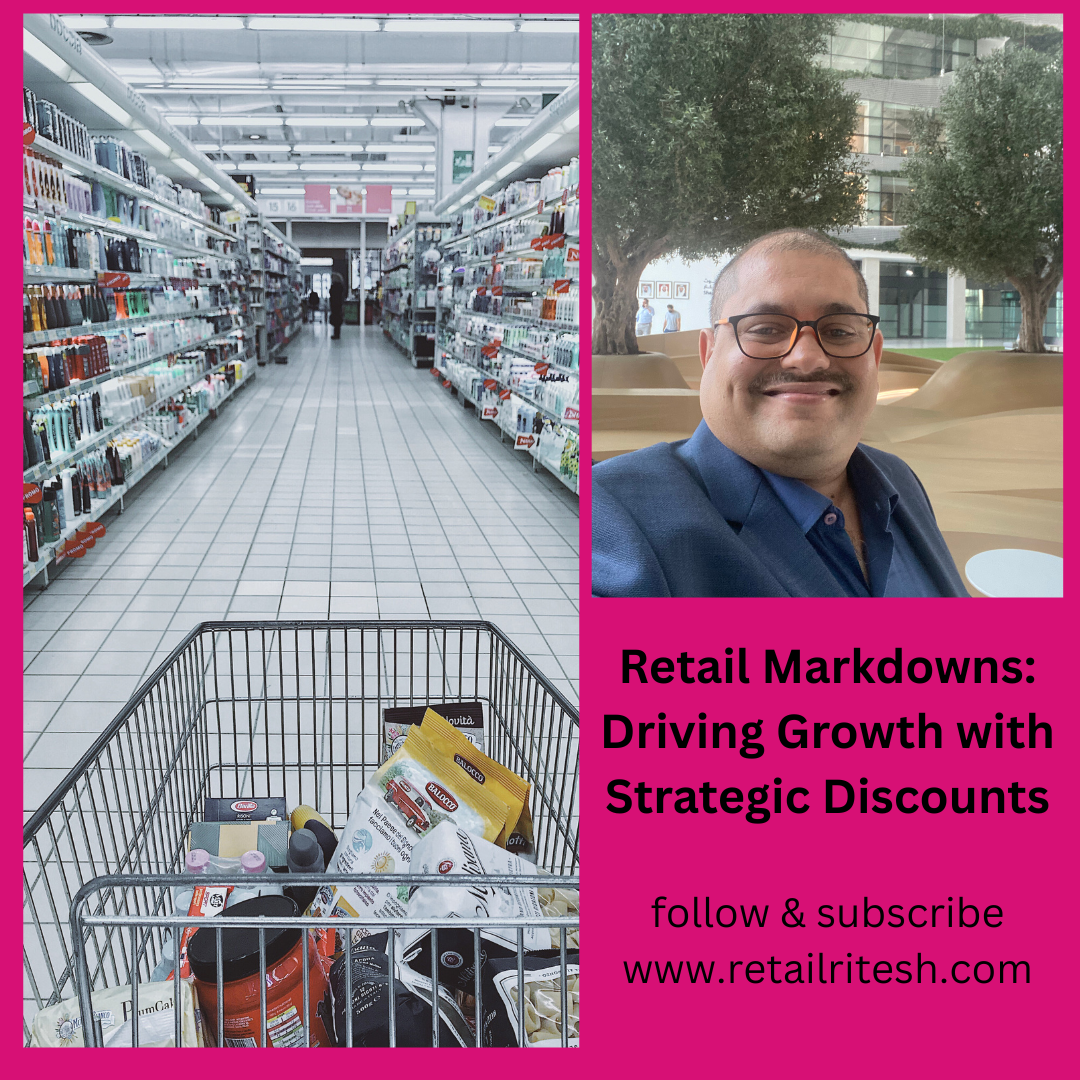Retail Markdowns: Driving Growth with Strategic Discounts
Markdowns a part of product Lifecycle
Markdowns, often viewed as margin killers, can become a strategic asset when used to drive volume, traffic, and brand loyalty.
The key lies in using data to manage markdown timing, pricing, and segmentation
Retail markdowns are planned price reductions aimed at accelerating inventory turnover, clearing seasonal stock, and driving customer traffic.
When executed strategically, markdowns not only mitigate losses but also fuel growth and profitability.
One of the most effective use cases for markdowns is seasonal inventory clearance.
Fashion retailer Zara, part of Inditex, uses end-of-season markdowns to maintain a lean inventory model.
With new styles hitting stores twice a week, Zara discounts unsold items by up to 50% after just 4–6 weeks.
This markdown cadence helps the brand maintain sell-through rates above 85%, significantly higher than the industry average of 60–70%.
It ensures shelves are constantly refreshed, encouraging repeat visits and brand loyalty.

Another key use case is driving foot traffic and optimizing store performance.
Target exemplifies this with its “clearance endcap” strategy. The retailer uses data analytics to apply tiered markdowns—starting at 15% and escalating to 70%—to slow-moving merchandise.
In 2022, Target reported a 10% year-over-year increase in store visits during clearance periods, contributing to a 2.7% lift in comparable store sales.
These markdowns not only clear space but also encourage basket-building behavior as customers discover discounted and full-price items together.
Other examples from real world show how markdowns can compensate for margin loss through increased footfall and higher basket sizes.
1.Macy’s: Footfall Surge Offsetting Margin Cuts
Macy’s, the U.S. department store chain, strategically deploys markdowns during key sales events like Black Friday and end-of-season clearances.
In 2022, Macy’s reported that its Q4 markdown campaign led to a 14% increase in store traffic, even as average unit margins dropped by 8%.
However, the higher volume resulted in a 6.2% increase in net sales year-over-year.
Moreover, promotional markdowns helped clear over $500 million in aged inventory, freeing up working capital and improving inventory turns by 15%.
2. H&M: Boosting Average Transaction Size
Fast fashion giant H&M leverages AI-driven pricing strategy to adjust prices based on inventory aging and demand elasticity.
During a 2023 spring clearance event, H&M saw a 9% drop in gross margin but a 12% increase in average transaction quantity (ATQ), as shoppers purchased more items per visit.
The increase in volume resulted in a 5% rise in overall revenue for the campaign period, validating the efficacy of markdowns in driving conversion.
To learn more about Markdowns, click here
Why Retailers Shouldn’t Shy Away?
Driving Traffic and Volume
Strategic markdowns attract footfall—both in-store and online—especially during key retail periods like end-of-season sales, holiday clearances, or promotional events. This traffic often results in basket expansion, as discounted items are bundled with full-price purchases.
Minimizing Losses
Holding on to unsold stock too long leads to deeper discounts later. Early, optimized markdowns help retailers maximize recovered value, reducing the steep losses of last-minute liquidation.
To learn Retail tricks from Tj Maxx, click here
Enhancing Brand Agility
Retailers like Zara, Target, and Nordstrom use material resource planning not as desperate discounts but as part of a data-driven lifecycle pricing strategy.
This increases sell-through rates, accelerates product rotation, and keeps the brand agile in a fast-moving market.
In essence, markdowns are not just necessary—they are vital for sustainable, customer-centric retail operations.




